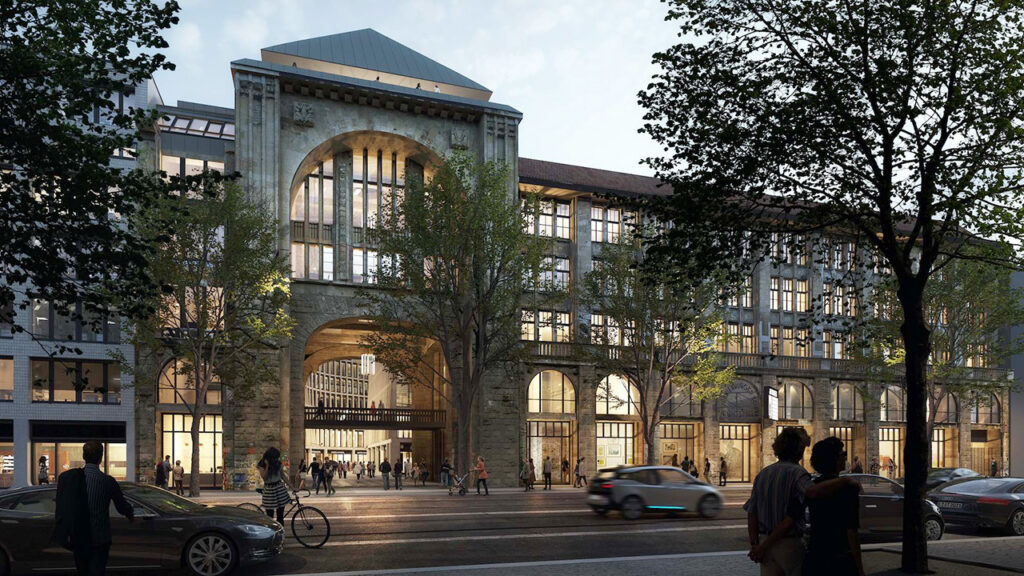When we connect over Zoom, Adriana Marianella is in Berlin and effusive about the progress of Fotografiska’s development on the city’s Oranienburger Strasse. As announced in 2021, the Swedish contemporary photography museum, already with outposts in New York and Tallinn, has plotted new venues in Shanghai, Miami, and Berlin, all due to open later this year and in 2023. Of Fotografiska’s growth into these “cultural epicenters,” she says, “We’re really, really excited to create cultural neighborhoods [in these cities].”
It’s an expansion that follows the institution’s recent merger with workspace collective NeueHouse to form the umbrella group and culture-driven platform, CultureWorks. Its aim? “We’re really creating an ecosystem,” says Marianella, CultureWorks’ first hire. As its Chief Development Officer, she emphasizes not just Fotografiska’s mission to become a “museum of the modern world,” hence its international buildout, but as well, to infuse “the traditional art experience with hospitality.”

Fotografiska’s expansion follows its merger with NeueHouse to form the holding company and cultural platform, CultureWorks. Image: Rendering of Fotografiska Berlin / Fotografiska
This merging culture and hospitality is already well-established at Fotografiska New York, where the museum space encompasses exhibition galleries, a retail store, a cafe, and the members’ lounge, Chapel Bar. The intent is to guarantee visitors an all-inclusive experience — “to socialize, be immersed in a culturally driven environment, and have great hospitality to go along with that” — which might be particularly attractive in a post-lockdown climate. “We’re really latching on to that success that we’ve had in New York,” adds Marianella, “and obviously looking to continue that in our new developments abroad.”
Before the Fotografiska concept hits Europe, Asia, and the West Coast, we spoke to Marianella for more on how these new venues are planning to elevate the museum experience, while catering to local cultural appetites.
Why is Fotografiska’s expansion into Berlin, Miami, and Shanghai important to its mission as a museum?
As we say, Fotografiska’s main mission is to inspire a more conscious world. Expanding globally and going out into the world is essentially manifesting that mission.
These new outposts are opening in an increasingly vibrant digital landscape, what with immersive technologies and NFTs now in the mix. How does Fotografiska plan to engage with the digital space?
Of course, we’re embracing the new digital frontier. The global CultureWorks programming platform is engaging with the leading voices in the NFT space. On the NFT front, we’ve hosted everyone from the likes of Quentin Tarantino to Lady Phoenix. And I think that what’s so unique about CultureWorks is that it’s a place where the creative class can congregate to really push culture forward especially in these new emerging spaces. I always find it intellectually and culturally nourishing for members to have the opportunity to engage with the leaders in these new frontiers.

“I think that’s so important — going into each of these cities, connecting with the communities, and integrating Fotografiska into the social fabric,” says Marianella. Image: Rendering of Fotografiska Shanghai / Fotografiska
Could you share how these new venues are planning to engage local communities or meet local tastes?
I think that’s so important — going into each of these cities, connecting with the communities, and integrating Fotografiska into the social fabric. Obviously, we have a robust membership at all of our Fotografiska locations, so we build a wonderful community in each of our museums. We’re keen to welcome and engage these local communities, especially as they’re coming out of the pandemic.
I’m a big believer in market research, but not traditional market research. I think it’s extremely important to spend time in markets — to really meet with all the key stakeholders across multiple different audiences, and understand not just what is there but also what’s missing and what do they want. And I think that in all the three cities that we’re going into, there are incredibly culturally curious audiences who are very excited to come and experience art in a more dynamic, experiential way.
Could you also speak to Fotografiska’s fusion of culture and hospitality as part of its museum experience?
What’s new about what we’re doing is that we’re likening Fotografiska to your go-to restaurant — it’s the way in which you engage in culture. Because of the concept that we’ve introduced, integrating hospitality within a museum, people are able to come in frequently, and not just see a new exhibition and check out new programming, whether it’s a talk or a concert, but also go to a restaurant or a bar that feels atmospheric and truly unique. It’s some place where they would like to spend their time rather than in a traditional, more sterile museum.
Post-lockdowns, what have you noticed about how people engage with Fotografiska’s offering?
What we were seeing, especially New York, because that really opened up first, was when people do go out, they’re not going to go to three different places, like maybe how they used to do pre-pandemic. We’re giving them a place where they can come, they can get a dose of culture, but they can also then have dinner or have a drink. They can wrap one full social experience into one place. Because we have a membership program as well, that makes people feel even safer, if you will. That’s actually been an interesting learning for us.



